Ford Puma vs Renault Scénic - Differences and prices compared
Costs and Efficiency:
Price and efficiency are often the first things buyers look at. Here it becomes clear which model has the long-term edge – whether at the pump, the plug, or in purchase price.
Ford Puma has a distinct advantage in terms of price – it starts at 24800 £, while the Renault Scénic costs 34600 £. That’s a price difference of around 9857 £.
In terms of energy consumption, the advantage goes to the Ford Puma: with 13.10 kWh per 100 km, it’s evident more efficient than the Renault Scénic with 16.60 kWh. That’s a difference of about 3.50 kWh.
As for range, the Renault Scénic performs evident better – achieving up to 598 km, about 222 km more than the Ford Puma.
Engine and Performance:
Power, torque and acceleration are the classic benchmarks for car enthusiasts – and here, some clear differences start to show.
When it comes to engine power, the Renault Scénic has a clearly perceptible edge – offering 218 HP compared to 168 HP. That’s roughly 50 HP more horsepower.
In acceleration from 0 to 100 km/h, the Ford Puma is slight quicker – completing the sprint in 7.40 s, while the Renault Scénic takes 7.90 s. That’s about 0.50 s faster.
In terms of top speed, the Ford Puma performs slightly better – reaching 210 km/h, while the Renault Scénic tops out at 170 km/h. The difference is around 40 km/h.
There’s also a difference in torque: Renault Scénic pulls slight stronger with 300 Nm compared to 290 Nm. That’s about 10 Nm difference.
Space and Everyday Use:
Beyond pure performance, interior space and usability matter most in daily life. This is where you see which car is more practical and versatile.
Seats: offers more seating capacity – vs .
In curb weight, Ford Puma is noticeable lighter – 1316 kg compared to 1822 kg. The difference is around 506 kg.
In terms of boot space, the Renault Scénic offers slight more room – 545 L compared to 523 L. That’s a difference of about 22 L.
In maximum load capacity, the Renault Scénic performs clearly perceptible better – up to 1670 L, which is about 387 L more than the Ford Puma.
When it comes to payload, Renault Scénic hardly perceptible takes the win – 518 kg compared to 469 kg. That’s a difference of about 49 kg.
Who wins the race?
The Ford Puma proves to be has a very small edge and therefore becomes our DriveDuel Champion!
Ford Puma is the better all-rounder in this comparison.
 @ Ford Motor Company / Ford Media Center
@ Ford Motor Company / Ford Media Center
Ford Puma
Costs and Consumption
View detailed analysis
Engine and Performance
View detailed analysis
Dimensions and Body
View detailed analysis
Ford Puma
The Ford Puma is a cheeky compact crossover that blends sporty styling with city-friendly practicality, giving drivers a surprisingly fun and composed ride. With clever storage tricks and a lively personality, it’s a smart pick for buyers who want enjoyment without fuss.
details @ Ford Motor Company / Ford Media Center
@ Ford Motor Company / Ford Media Center
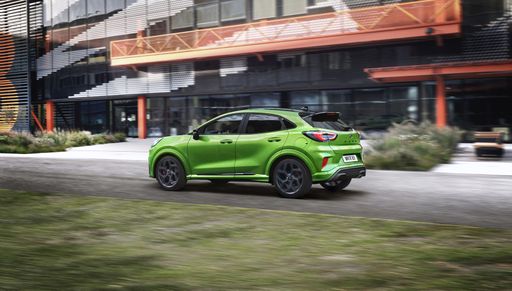 @ Ford Motor Company / Ford Media Center
@ Ford Motor Company / Ford Media Center
 @ Ford Motor Company / Ford Media Center
@ Ford Motor Company / Ford Media Center
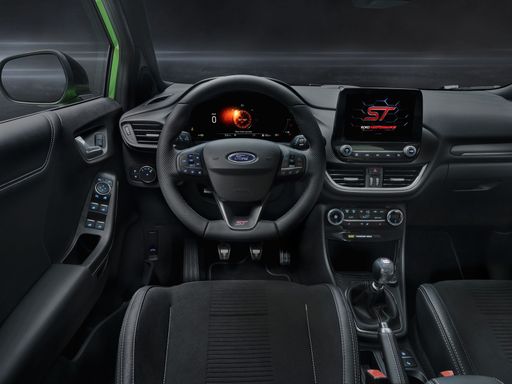 @ Ford Motor Company / Ford Media Center
@ Ford Motor Company / Ford Media Center
Renault Scénic
The Renault Scénic is a quietly clever family MPV that balances everyday practicality with unexpected flair, offering a roomy, flexible cabin that makes school runs and weekend escapes less of a chore. It won't dazzle like a sports car, but its composed ride, sensible tech and thoughtful storage solutions make it a superbly pragmatic choice for buyers who prefer substance with a wink.
details @ Renault Group Media
@ Renault Group Media
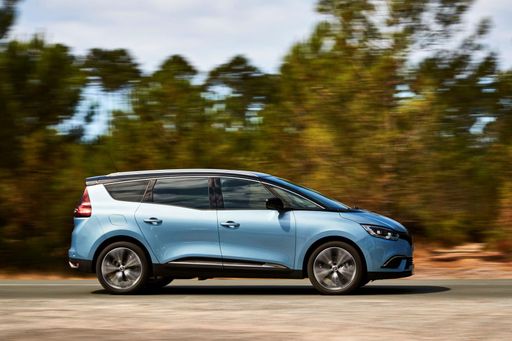 @ Renault Group Media
@ Renault Group Media
 @ Renault Group Media
@ Renault Group Media
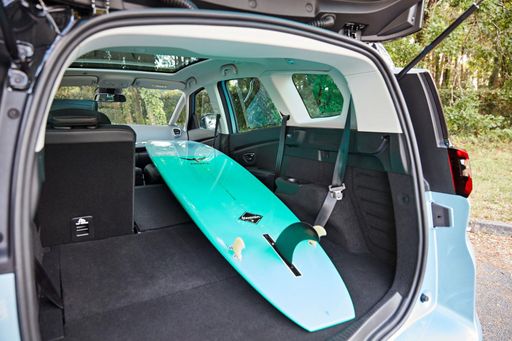 @ Renault Group Media
@ Renault Group Media
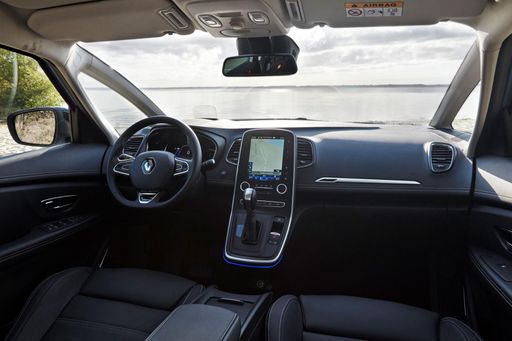 @ Renault Group Media
@ Renault Group Media
 @ Ford Motor Company / Ford Media Center
@ Ford Motor Company / Ford Media Center
|
 @ Renault Group Media
@ Renault Group Media
|
|
|
|
Costs and Consumption |
|
|---|---|
|
Price
24800 - 36300 £
|
Price
34600 - 44000 £
|
|
Consumption L/100km
5.4 - 5.9 L
|
Consumption L/100km
-
|
|
Consumption kWh/100km
13.1 - 13.9 kWh
|
Consumption kWh/100km
16.6 - 17.5 kWh
|
|
Electric Range
361 - 376 km
|
Electric Range
420 - 598 km
|
|
Battery Capacity
43 kWh
|
Battery Capacity
-
|
|
co2
0 - 135 g/km
|
co2
0 g/km
|
|
Fuel tank capacity
42 L
|
Fuel tank capacity
-
|
Dimensions and Body |
|
|---|---|
|
Body Type
SUV
|
Body Type
SUV
|
|
Seats
5
|
Seats
5
|
|
Doors
5
|
Doors
5
|
|
Curb weight
1316 - 1563 kg
|
Curb weight
1822 - 1927 kg
|
|
Trunk capacity
456 - 523 L
|
Trunk capacity
545 L
|
|
Length
4186 - 4226 mm
|
Length
4470 mm
|
|
Width
1805 mm
|
Width
1864 mm
|
|
Height
1550 - 1555 mm
|
Height
1571 mm
|
|
Max trunk capacity
1216 - 1283 L
|
Max trunk capacity
1670 L
|
|
Payload
367 - 469 kg
|
Payload
514 - 518 kg
|
Engine and Performance |
|
|---|---|
|
Engine Type
Electric, Petrol MHEV
|
Engine Type
Electric
|
|
Transmission
Automatic, Manuel
|
Transmission
Automatic
|
|
Transmission Detail
Reduction Gearbox, Manual Gearbox, Dual-Clutch Automatic
|
Transmission Detail
Reduction Gearbox
|
|
Drive Type
Front-Wheel Drive
|
Drive Type
Front-Wheel Drive
|
|
Power HP
125 - 168 HP
|
Power HP
170 - 218 HP
|
|
Acceleration 0-100km/h
7.4 - 9.8 s
|
Acceleration 0-100km/h
7.9 - 8.6 s
|
|
Max Speed
160 - 210 km/h
|
Max Speed
150 - 170 km/h
|
|
Torque
170 - 290 Nm
|
Torque
280 - 300 Nm
|
|
Number of Cylinders
3
|
Number of Cylinders
-
|
|
Power kW
92 - 124 kW
|
Power kW
125 - 160 kW
|
|
Engine capacity
999 cm3
|
Engine capacity
-
|
General |
|
|---|---|
|
Model Year
2025
|
Model Year
2025
|
|
CO2 Efficiency Class
A, D
|
CO2 Efficiency Class
A
|
|
Brand
Ford
|
Brand
Renault
|
Is the Ford Puma offered with different drivetrains?
The Ford Puma is offered with Front-Wheel Drive.
The prices and data displayed are estimates based on German list prices and may vary by country. This information is not legally binding.
